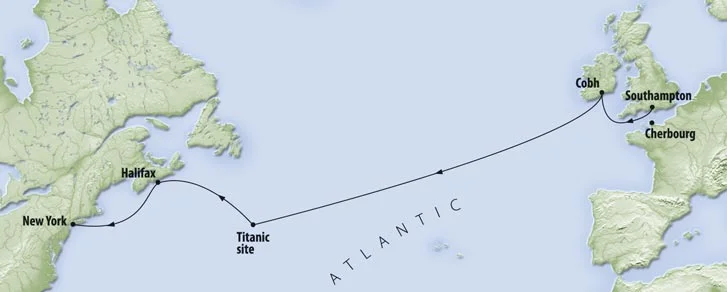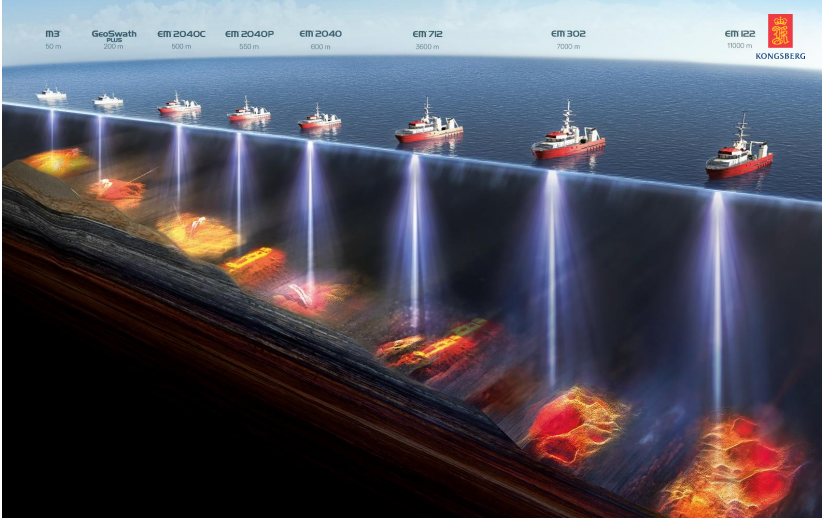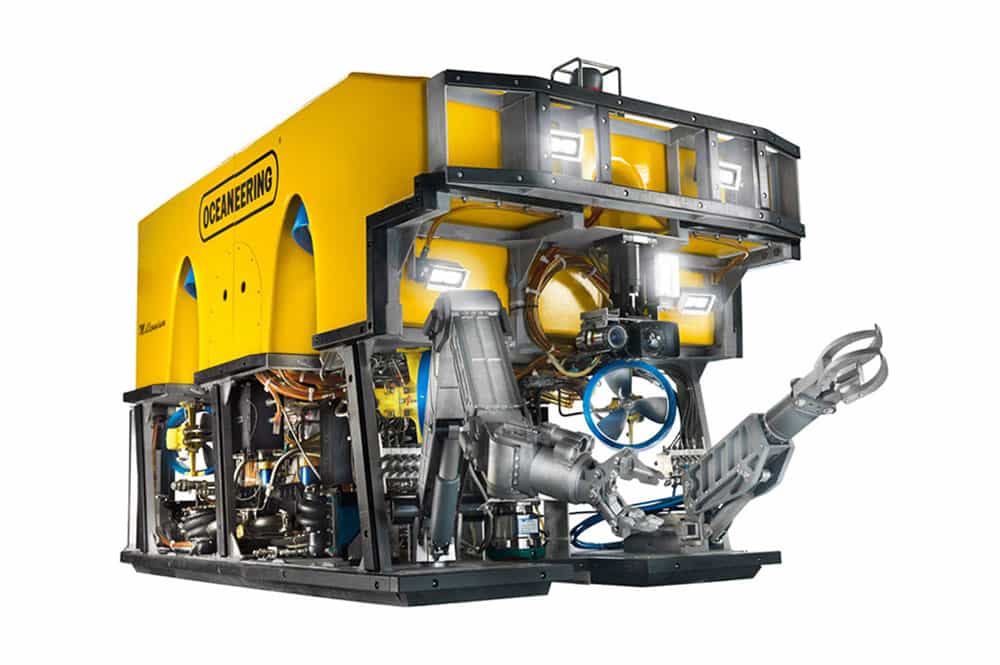The Titan, a submersible operated by OceanGate Expeditions, has gone missing in the North Atlantic while exploring the Titanic wreckage [1][2]. The sub lost contact with the research vessel Polar Prince an hour and 45 minutes into its dive on Sunday, and as of Monday, the US Coast Guard estimated that the sub had between 70 and 96 hours of emergency oxygen [1][2]. The search effort includes two aircraft, a Canadian coastguard vessel, and an underwater sonar search [1][2][3]. Among the five people on board, four have been identified, including British businessman and explorer Hamish Harding, his son Suleman Dawood, and French explorer Paul-Henry Nargeolet [1]. The submersible carries seven systems of unloading weight that aid it to ascend to the surface by itself if necessary, but there are concerns that the vessel could be trapped at the bottom of the ocean where atmospheric pressure is 400 times higher, making it impossible to stage a manned rescue [3].

References: [1] Titanic sub: What we know about the search for … [2] Titanic tourist submarine live updates: Search underway … [3] Search mission continues for missing Titanic tour sub
Where is the Titanic located now?
The Titanic wreck is located in the Atlantic Ocean at a depth of around 2.5 miles (3,800m) and is situated an estimated 370 miles away from the coast [1][2]. The exact location of the sinking can be found by using the Google Maps coordinates 41.7325° N, 49.9469° W [3]. The ship lies about 600m apart from two pieces, and a full-sized digital scan has recently been made of the Titanic [1]. The wreckage was discovered in 1985 during a covert US military operation that was also searching for nuclear submarines lost in the 1960s [3]. However, it is unlikely that the shipwreck will ever be raised [1].

References: [1] Where is the Titanic now? Location of shipwreck in 2023 [2] Where is the wreck of the Titanic? [3] How to find where Titanic hit iceberg on Google Maps
What Should be the Plan to Rescue Titanic Tourist Submersible?
The following steps could be taken to initiate a rescue operation:
- Alert Authorities: Immediately notify the appropriate authorities, such as the coast guard or maritime rescue agencies, about the missing submersible. Provide them with all relevant details, including the last known location, time of disappearance, and any available information about the submersible’s crew or passengers.
- Conduct Search and Rescue Operation: Coordinate with maritime search and rescue teams to launch an organized and systematic search operation. This may involve deploying search vessels, aircraft, and underwater exploration equipment to cover the area where the submersible was last seen.
- Utilize Sonar Technology: Employ advanced sonar technology to scan the ocean floor and locate any signs of the missing submersible. Side-scan sonar systems can provide detailed images of the seabed, helping to identify potential wreckage or anomalies.
- Deploy Remotely Operated Vehicles (ROVs): If the submersible is located at extreme depths where human divers cannot reach, ROVs equipped with cameras and manipulator arms can be deployed to visually inspect the area and gather more information. These ROVs can potentially locate and assess the condition of the submersible.
- Engage Submarine Rescue Assets: If the missing submersible is in a distressed or compromised state, specialized submarine rescue assets may be called upon. These assets are specifically designed for underwater rescue operations and can be mobilized to provide assistance, retrieve occupants, or salvage the submersible.
- Collaborate with Ocean Exploration Experts: Seek the support and expertise of ocean exploration and deep-sea experts who have experience in locating and recovering underwater vehicles. Their knowledge of underwater operations, advanced equipment, and techniques can greatly assist in the search and rescue efforts.
- Maintain Open Communication: Ensure effective communication among all involved parties, including the OceanGate company, search and rescue teams, government agencies, and any potential support organizations. Timely updates and collaboration will aid in coordinating rescue efforts and maximizing the chances of a successful outcome.
It’s important to note that the specific details of a rescue operation can vary depending on the circumstances, location, and available resources. Swift and coordinated actions, combined with the utilization of appropriate technology and expertise, are crucial in increasing the chances of a successful rescue mission.
What’s the Best Sonar Technology to use it?
One of the best sonar technologies for scanning the ocean floor and locating signs of a missing submersible at depths of around 2.5 miles (3,800 meters) is Multibeam Echo Sounder (MBES). MBES systems provide high-resolution and accurate bathymetric data, allowing for detailed mapping of the seafloor.
Here are a few reasons why MBES is often preferred for deep-sea mapping:
- Coverage and Resolution: MBES systems emit multiple sonar beams simultaneously, providing wide swath coverage of the seafloor. This enables efficient mapping of large areas and improves the chances of locating the missing submersible. Additionally, MBES can provide high-resolution data, capturing fine details of the seafloor features.
- Depth Capability: MBES technology is designed to operate at great depths, including depths exceeding 2.5 miles (3,800 meters). It is equipped to handle the challenges of deep-sea environments, such as extreme pressures and long acoustic travel times.
- Accuracy and Precision: MBES systems are known for their accuracy in measuring water depths and seafloor features. This level of precision is crucial for identifying any anomalies, wreckage, or potential targets related to the missing submersible.
- Sidescan Capability: Many advanced MBES systems also incorporate sidescan sonar, which provides detailed imagery of the seafloor and can help identify objects or structures of interest. Sidescan sonar can be particularly useful in locating the missing submersible or any debris associated with it.
- Data Processing and Visualization: MBES systems generate vast amounts of data, and modern software tools can process and visualize this data in real-time. This allows operators to efficiently interpret the seafloor data, identify potential targets, and make informed decisions during the search operation.
It’s worth noting that specific MBES models and configurations may vary depending on the manufacturer and user requirements. Professional oceanographic and hydrographic survey companies often utilize state-of-the-art MBES systems with advanced features tailored for deep-sea mapping and search operations.
When conducting a search for a missing submersible, it is essential to engage experts in oceanographic surveying and underwater search operations who can select and deploy the most suitable MBES system for the specific mission.
What Private or Government Equipment have Multibeam Echo Sounder (MBES) ?
Both private and government entities possess equipment with Multibeam Echo Sounder (MBES) capabilities for scanning the ocean floor and locating signs of a missing submersible at depths of around 2.5 miles (3,800 meters). Here are a few examples:
- Private Companies:
- Oceanographic Survey Companies: Companies specializing in oceanographic surveying and underwater mapping often employ advanced MBES systems. Examples include Fugro, DOF Subsea, and Ocean Infinity.
- Subsea Engineering Firms: Some companies that provide subsea engineering services may have MBES-equipped vessels for conducting underwater surveys. For instance, Subsea 7 and Saipem are known for their capabilities in this field.
- Marine Research Institutions: Research institutions with a focus on marine exploration and studies, such as Woods Hole Oceanographic Institution or Scripps Institution of Oceanography, often possess MBES-equipped research vessels.
- Government Agencies:
- Naval Research Organizations: National naval research organizations, like the Office of Naval Research (ONR) in the United States, invest in MBES technology for various applications, including ocean floor mapping and underwater vehicle operations.
- Geological Survey Agencies: Government geological survey agencies, such as the United States Geological Survey (USGS) or the British Geological Survey (BGS), often utilize MBES for seafloor mapping and geological research purposes.
- National Oceanographic Institutions: National institutions dedicated to oceanography, such as the National Oceanic and Atmospheric Administration (NOAA) in the United States or the Institute of Marine Research (IMR) in Norway, have vessels equipped with MBES systems for scientific research and mapping.

These examples are not exhaustive, as there are numerous private and government entities worldwide involved in oceanographic research, underwater mapping, and search operations that utilize MBES technology. The specific equipment and vessels used can vary depending on the organization’s capabilities, resources, and mission requirements.
It is important to note that when a search and rescue operation is underway for a missing submersible, government agencies, in collaboration with private companies, may pool their resources and expertise to conduct the search using appropriate MBES-equipped vessels and equipment.
What Deploy Remotely Operated Vehicles (ROVs) can Able to Find the Missing Submersible?
Deploying Remotely Operated Vehicles (ROVs) to find a missing submersible at depths of around 2.5 miles (3,800 meters) requires specialized deep-sea ROVs that are capable of operating at extreme depths and have advanced imaging and maneuvering capabilities. Here are a few examples of ROVs commonly used for deep-sea search and recovery operations:
- Triton Submarines DeepView ROV: Designed for deep-sea exploration and recovery missions, the Triton DeepView ROV can operate at depths of up to 3,800 meters. It features high-definition cameras, powerful lights, and robotic arms for visual inspection and potential recovery tasks.
- Saab Seaeye Falcon DR ROV: The Falcon DR ROV is a versatile remotely operated vehicle used for a wide range of applications, including deep-sea search and recovery. It can operate at depths of up to 3,000 meters and is equipped with high-resolution cameras and manipulator arms for detailed inspection and potential retrieval operations.
- Forum Energy Technologies Perry XLX-C ROV: The Perry XLX-C is an advanced ROV designed for deep-sea subsea operations, including search and recovery. It has a depth rating of up to 4,000 meters and features high-definition cameras, powerful lights, and versatile tooling options to assist in locating and potentially rescuing the missing submersible.
- Oceaneering Millennium Plus ROV: The Millennium Plus ROV is a heavy-duty work-class ROV specifically designed for deep-sea operations. With a depth rating of up to 4,000 meters, it is equipped with advanced sonar systems, high-resolution cameras, manipulator arms, and other specialized tools to aid in search and recovery efforts.
- Deep Ocean Engineering Phantom T5 ROV: The Phantom T5 ROV is a versatile and compact system capable of operating at depths of up to 3,000 meters. It offers high-resolution imaging capabilities, powerful lighting, and manipulator arms to conduct detailed inspections and potential recovery tasks in deep-sea environments.

These are just a few examples of ROVs that possess the necessary capabilities to conduct search and recovery operations at depths of around 2.5 miles (3,800 meters). Each ROV model may have specific features and capabilities that are tailored to the requirements of deep-sea exploration, search, and recovery tasks. During a search operation, experts and organizations with expertise in deep-sea robotics and subsea operations will determine the most suitable ROV based on the specific mission parameters and the nature of the missing submersible.


